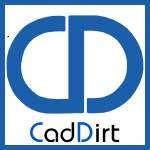PDM: The Conduit To CAD Efficiency
/Product data management, better known as PDM, has grown in popularity across many CAD platforms over the past 5 years but still adoption seems to be the same, slow. This slow adoption among companies utilizing 3D parametric CAD usually results in short term and long term problems from a variety of aspects such as document control, change orders and other common activities like search. These issues are not unique to one CAD platform but are the common thread to these data management issues.
Every company has a process, even if that process is walking down the hall to ask someone for a bank of part numbers that are then written on a piece of paper. These processes, in some cases, are manual but they span across many departments and disciplines so it is difficult to prevent details from falling through the cracks. Focusing on the processes that surround product development, CAD is a major player in this arena. A decade ago, the CAD file was like any other file, a flat, single document like a PDF, however today, much of the parametric CAD power comes from associativity. This technology, yet powerful, brings a file management challenge that is typically unknown to new users and can catch experienced users off guard.
Associativity & Revisions: The common way of making a copy entailed performing a File, Save-as, assigning a new file name then changing that copy to meet the requirements of the new variation. Today, this "web" of connected documents can take the intuitive "Save-As" approach to creating a copy and destroy the original by reappointing all of it's references to a new file name. This "Save-as" procedure was also the typical approach to creating revisions, however with revisions impacting multiple files at once, the challenge is again much greater than it was in the flat file days. PDM is aware of this relationship hierarchy and manages it correctly by automatically displaying the dependency with tools like "Where Used" and "Contains" giving the users more visibility to the impact of revisions and change control.
Access Control: Whenever the word "Access" is referred to most point their finger to the IT department to create a folder structure on the network, giving users a variety of access. This "Venue" approach to access control is primitive and a bit cumbersome since access to the files are usually changing based on their "Status" not their "Venue". Having an assembly, for example, that has a drawing, parts and part drawings would be cumbersome to move to another folder to modify the access to these files, plus certain users would have to have access to both folders to perfom the move. This becomes much more difficult to manage. PDM can give credentials to users based on the document's status. This allows control to be applied to where the documents are in the company's design cycle and not by the physical folder it resides. This "work-flow" is a representation of the design cycle and every step could have different access which is a streamlined approach to a process centric control.
Concurrent Engineering: Another common frustration that occurs when working on complex designs is when teams of engineers are working on large CAD projects. When someone is working on a top-level assembly, it can be challenging to allow others to work on any files that are associated to that assembly without utililzing some tools to control write-access. When working in PDM, a user can specify what files are going to be edited while only referencing the other associated documents, which could be edited by other users in the engineering team. Tools are also available to notify the users that the files they are referencing are "out-of-date" and allow real-time update to be performed to those associated files, keeping everyone in the team abreast of the changes.
Search: Finding files within Windows Explorer is limited to "contains" searches for details like name, date created, date modified etc. Many enginering documents have metadata in the Windows file properties which can contain many variables that detail the file's contents. PDM places this metadata in reach of the search functionality, lending to built search critera that could potientially find a file made of aluminum, manufactured on a certain date, that contains a partial serial number. This type of "surgical" search criteria can take the mystery out of finding files and make it trivial again.
PDM has become an essential part of using CAD due to the complexity of the models that are created. As technolgoy grows the CAD capability, more complexity is to come to managing the data in the future. Utilizing PDM as part of the CAD tool allows it to continue to control that complexity from the data management side, allowing the user to, again, focus on the design not the tool. Whether it is one user or hundreds of users, PDM can simplify the user experience by carrying the load of data management, since change is always part of the process. ~Lou

